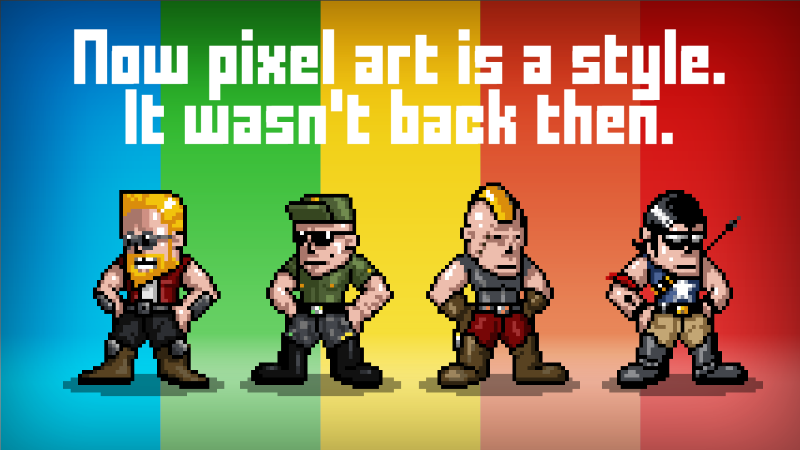Pixel Art or Retro Style
 Initially pixel art was the only game in town. Now it has become a deliberate design choice.
Initially pixel art was the only game in town. Now it has become a deliberate design choice.Some time ago I tried to explain the art style of our space shooter 1993 Space Machine to a new artist that would help us out with some additions to the game. As I explained our way of working to him I realized that people today that are making pixelated retro graphics have a different approach to it then what we had.
In 1993 we were doing our best to hide the technical limitations of the time, but today that is embraced as part of the charm and style. So the limitations back then shaped our style, just like the now popular retro pixel style, but for completely opposite reasons.
[h2]
Rough or smooth?
[/h2]The screen resolution of 320x256 pixels presented a challenge in getting graphics to look smooth. We spent lots and lots of time on 'anti aliasing', or smoothing out the edges, of our art. However, this is almost never done today, as seen in these two examples of the great games 'Hoppenhelm' and 'Zero Ranger'. To us, this would not be finished artwork, but has today been accepted as a deliberate art style.

So 'anti aliasing' is the process of smoothing out unwanted pixelated edges that appear on high contrast areas. I've tried to illustrate what's going on in the image here.

Red= Desired shape.
Green= Shave off 'subpixels'.
Yellow= Fill up 'subpixels'.
On shapes where the angle is small, a longer distance for smoothing out the aliasing is needed, as illustrated with the line in the image. This means more shades of that color are needed than when anti aliasing tight angles, like the circle. The objects appear a bit more blurry, but smoother. Modern pixel art is on the other hand often sharper but also very rough.
A clear example of this in effect can be seen in this planet. All smooth edges, but not as sharp.